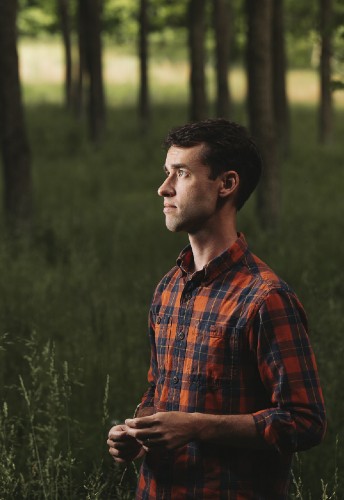Tree Segmentation
New methodology may one day map forests around the world
What if we could map every tree on the planet? It’s a question that drives the work of Joshua Carpenter (MS ’20), a PhD student and researcher in the Geospatial Data Science Lab supervised by Jinha Jung, Assistant Professor of Civil Engineering. Just as the field of precision agriculture uses high technology sensor and analysis tools to measure the growth and health of fields of crops, Carpenter is developing methodologies that could one day be similarly applied to forests around the globe.
“In the field of geomatics, we believe if you want to understand something, you have to be able to put it on a map,” Carpenter said. “While our discipline is rooted in traditional surveying, technology such as GPS satellites, imaging satellites, UAVs and LiDAR allow for many more applications beyond construction. I’m interested in applications to trees because it’s an area that’s hardly studied and trees are highly important to civilization.”
Trees are important in developing products, supplying lumber and fuel. They’re also important for the ecosystem and the environment, providing habitats and nutrients for animals, birds and insects. Understanding the health of individual trees would allow for better management of invasive pests such as the emerald ash borer or the deadly blight that has nearly eradicated the American chestnut. Mapping trees can also provide critical information used to mitigate forest fires and protect natural resources.
Mapping every tree on the planet is a gargantuan task, one that Carpenter hopes might be achieved within his lifetime. Right now, he’s focused on mapping 500 acres of Martell Forest, a University-owned outdoor lab managed by the Department of Forestry and located about seven miles west of campus.

Using an unmanned aerial vehicle (UAV) to fly over the forest and take high resolution images enables Carpenter to map items down to the centimeter. But it’s not a scalable solution. Covering larger areas requires the use of satellite data, but the resolution of images obtained by satellite is much lower and doesn’t accurately depict tiny features. Several trees might be represented within a single pixel. The challenge is finding a method to map small things from low resolution data.
“What we’re trying to do at Martell is build a data set that will serve as a ground validation,” Carpenter said. “We have high resolution data. We also have low resolution data. We’re trying to bridge the gap between the two.”
On this project, Carpenter and Jung are partnering with Songlin Fei, professor of forestry and natural resources and director of the Integrated Digital Forestry Initiative which leverages digital technology and multidisciplinary expertise to measure, monitor and manage urban and rural forests to maximize social, economic and ecological benefits.
The team plotted 100 points scattered throughout Martell and then used a laser scanner to create a point cloud of the trees within 100 feet of each point. That generates a super high resolution data set to describe the trees within that small cluster in the middle of the forest. Then, a UAV was flown over the forest a few times during the season to take pictures of the trees. The data obtained from the UAV covers the entirety of the forest in high resolution, although not as high resolution as what can be obtained with the laser scanner.
Analyzed together, the data sets create validation data that can be used to study how each tree expresses itself in even larger data sets such as those obtained by satellites. Carpenter then developed a series of algorithms that identify individual tree trunks within a point cloud. By mimicking the method that certain trees grow, the algorithm can interpret data in the point cloud to map the rest of the tree, segmenting out individual trees.
“This technology is going to be very useful,” Carpenter said. “It’s a major step towards automating how we monitor the health of the world’s forests and manage disease and wildfires. We’ll be able to identify which species are thriving and which are dying across different climates. I’m still an engineer even though I’m working on forests. So it’s the thrill of finding a solution to a problem that excites me.”
